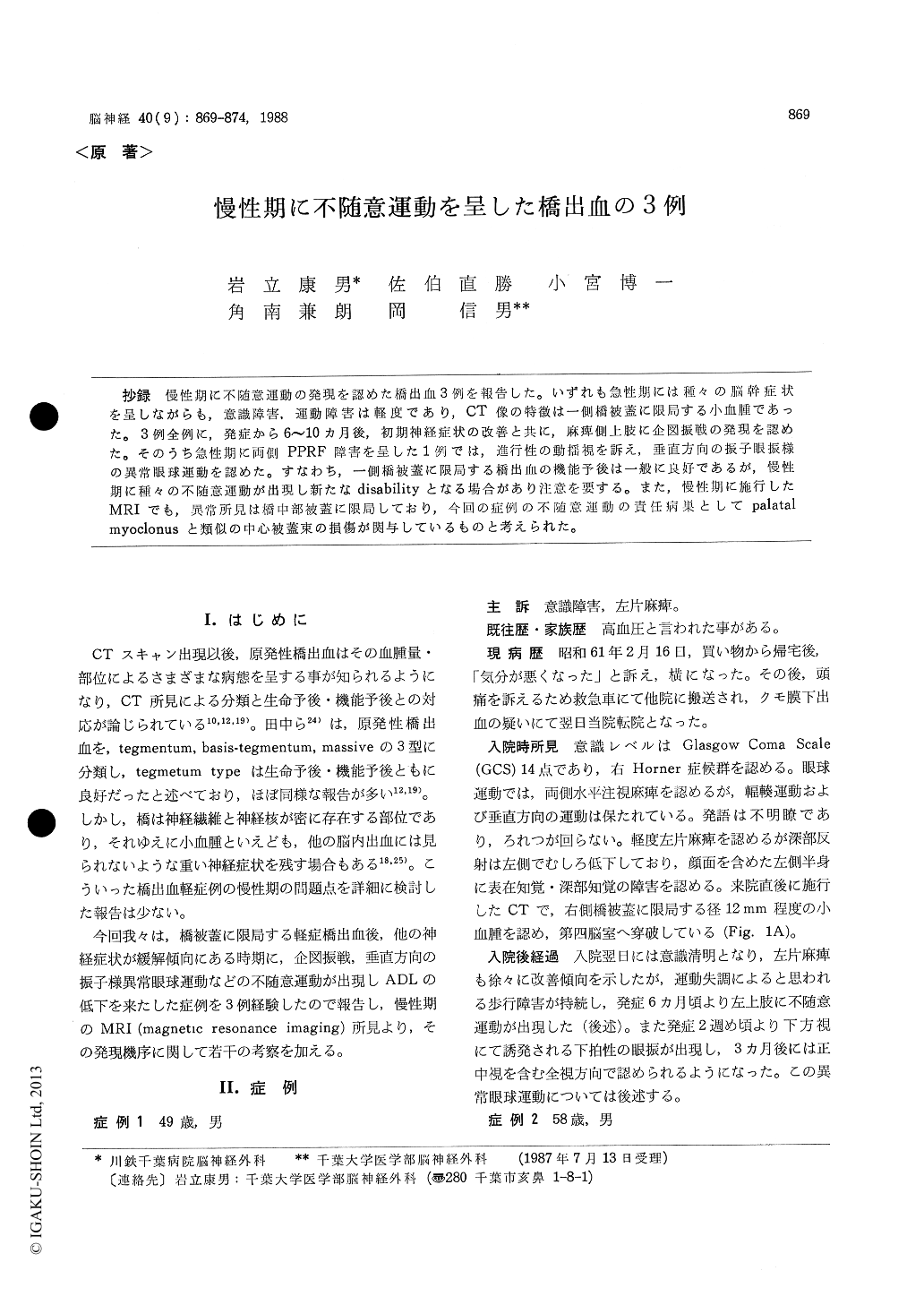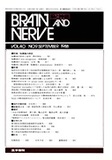Japanese
English
- 有料閲覧
- Abstract 文献概要
- 1ページ目 Look Inside
抄録 慢性期に不随意運動の発現を認めた橋出血3例を報告した。いずれも急性期には種々の脳幹症状を呈しながらも,意識障害,運動障害は軽度であり,CT像の特徴は一側橋被蓋に限局する小血腫であった。3例全例に,発症から6〜10ヵ月後,初期神経症状の改善と共に,麻痺側上肢に企図振戦の発現を認めた。そのうち急性期に両側PPRF障害を呈した1例では,進行性の動揺視を訴え,垂直方向の振子眼振様の異常眼球運動を認めた。すなわち,一側橋被蓋に限局する橋出血の機能予後は一般に良好であるが,慢性期に種々の不随意運動が出現し新たなdisabilityとなる場合があり注意を要する。また,慢性期に施行したMRIでも,異常所見は橋中部被蓋に限局しており,今回の症例の不随意運動の責任病巣としてpalatalmyoclonusと類似の中心被蓋束の損傷が関与しているものと考えられた。
We reported three cases with involuntary move-ments following pontine hemorrhage. All cases had various symptoms indicating brain-stem le-sions, but the consciousness and motor functions were not severely disturbed. CT scans showed a small hematoma localized in unilateral pontine tegmentum in all cases. Intention tremor deve-loped six to ten months after the hemorrhage when the initial neurological symptoms were almost relieved. Electromyogram (EMG) showed a rhythmic 3-4 Hz alternating or synchronized tremor pattern which was induced by finger-nose test and arm stretching. In one case which had showed bilateral horizontal gaze palsy indi-cating bilateral PPRF involvement in the acute stage, spontaneous vertical nystagmus was ob-served when the tremor developed. Electro-nystagmogram (ENG) and its differential calculus showed a pendular nature of the eye movement. This abnormal eye movement did not disappear while the patient was asleep. This case also developed a palatal myoclonus in the chronic stage. Magnetic resonance images (MRI's) obtained one to three years after the hemorrhage revealed a lesion localized in hemipontine tegmentum. The responsible lesion of these involuntary movements was thought to be located in pontine tegmentum from the MRI findings.
The functional Prognosis of small hemorrhage in unilateral pontine tegmentum is generally good, but care should be taken for the possi-bility of late development of various types of involuntary movement.

Copyright © 1988, Igaku-Shoin Ltd. All rights reserved.


